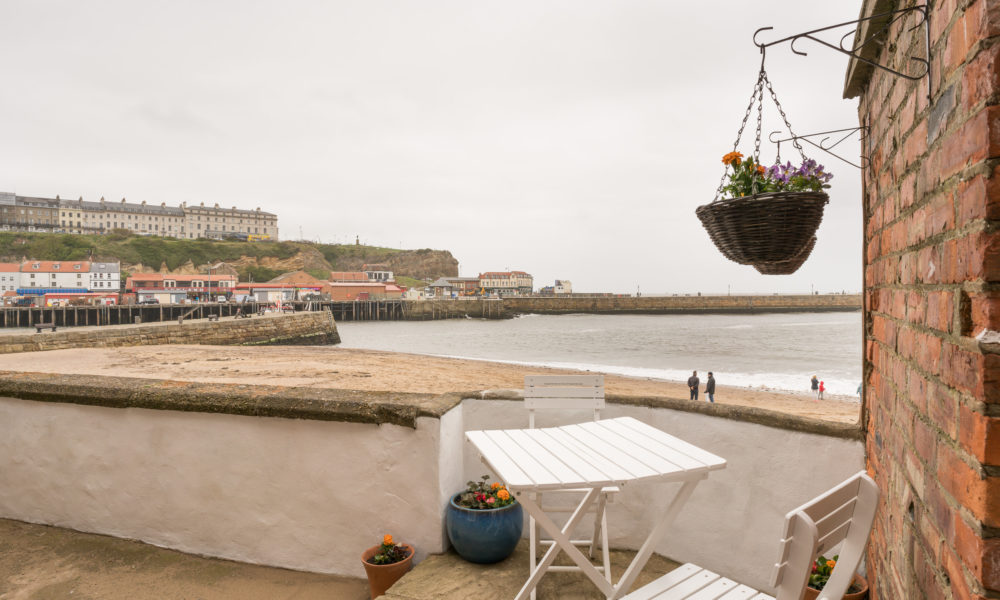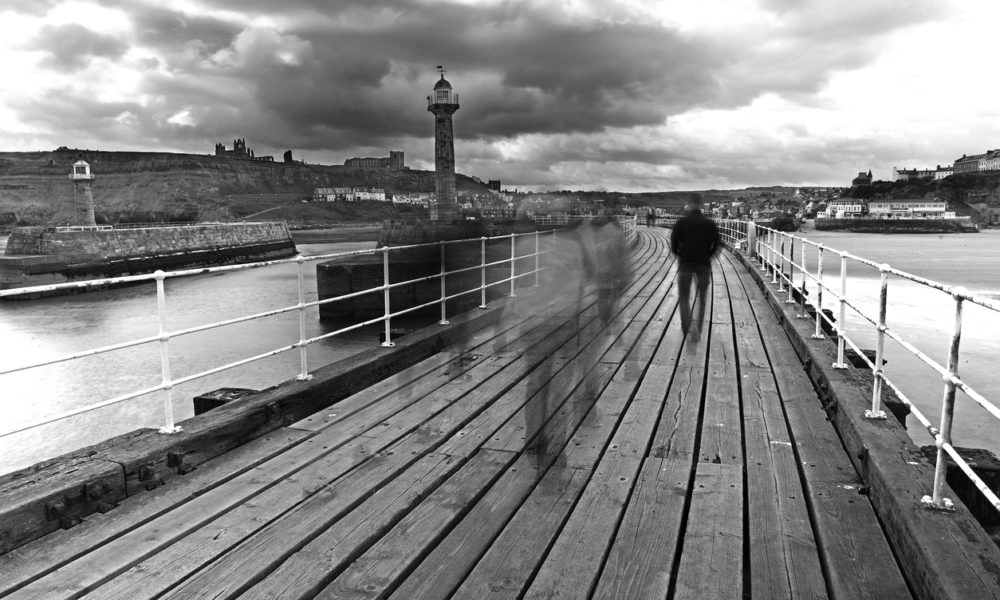Some history on Quayside Cottage
Built c1950
First Structure On Site 1700
Known as Monkton’s Building
Five floor structure; largest building in Whitby.
1700 – 1830 Warehouse and Weavings Sheds for Sailcloth.
1930 Onwards Herring Warehouse.
The site where Quayside Cottage rests today was once the comercial hub of the harbour. In, or possibly even before 1700, a vast five storied warehouse was erected here, the upper floors being used for a short time as a weaving shed for sailcloth and the lower floors for warehousing. Tate Hill Quay was the second most impôrtant quay in Whitby and Tate Hill Beach, also known as Collier Hope, directly outside Quayside Cottage was where trading vessels from Viking days had been beached to be unloaded.
But it was than merchandise that was handled at Tate Hill for in the nineteenth century, as life grew steadily more difficult in Whitby and the surrounding area, thousands of people came to this beach and quay. They came here to board the tenders that would take them to the large emigrant ships like the Quebec which, in turn, took took them to Canada and the Americas to start new and, they hoped, better lives. Untold numbers never even reached the goal of their «New World», dying instead in the freezing waters of the North Atlantic. Countless others were to perish at the hands of the rightly outraged native populations of the Americas, while some fell prey to the gunfighters, cowboys and general lawlessness of the struggling continent. But for all of them Tate Hill Pier and Quay were the last things of home they would ever see.

However, Tate Hill Beach has a far more macabre history than that. The scene of wrecks from time immemorial, it was here in 1885 that the schooner Dimitry of Narva was driven aground in a terrible storm. And in fact, believe it or not, one could say that Dracula was born outside the windows of this very cottage on a dark and stormy night.
This is how it happened: Bram Stoker was told of the horrors of that night when he visited Whitby in 1890. From his hotel windows on West Cliff he could see directly down to the site of the ghastly wreck in which the crew took to the masts for safety, only to be swept away one by one in the storm. By the morning light, when rescuers finally made it aboard the stricken ship, her captain was found dead, lashed to the ship’s wheel. Frank Meadow Sutcliffe, the world famous Whitby photographer, even took a photograph of the wrecked ship. Skillfully weaving countless other strands of local legend, folklore and events together, Bram Stoker crafted one of the great horror stories of all time and Dracula was born.

